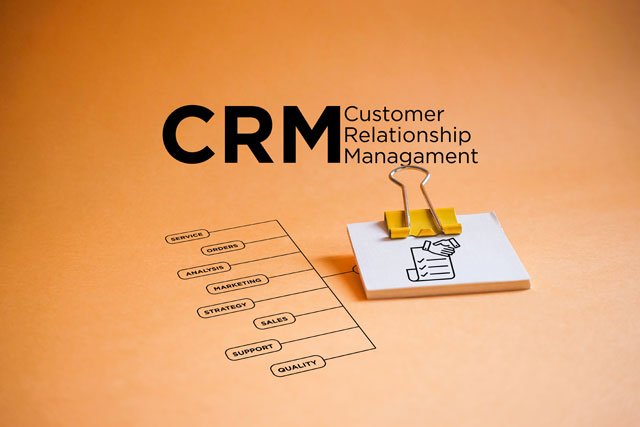Collaboration practically does not exist without consensus, and consensus happens with collaboration. Consensus is give-and-take in information sharing. It's the ability to discuss differences calmly and come to some form of an agreement. By discussing differences in opinion, new ideas are free to surface.
Consensus entails the process of reaching the agreement, and includes the conclusion from said process. A consensus process includes appraising conflicting ideas, contradictory statements, and dissimilar views. The conclusion ends in a satisfactory agreement, although the understanding may be a reconciliation of sorts. In other words, the answer may not be a perfect 10, but it's an acceptable 8.5. Everyone can support the outcome, but not everyone is in complete agreement. What they did agree upon is that the group can live with their decision.
With those thoughts of what a consensus is, look at what a consensus is not:
-
Authoritarian or dictatorial
-
Perfect
-
Conforming or bending to one belief over another
-
My way or the highway
-
Hierarchical decision making
-
Unanimous
-
Representative of a priority listing for a particular group
-
A group agreement decision process
-
A majority vote
-
A watered-down agreement
When any group of people get together and discuss ideas, there always will be varying opinions of fairness. Many times, variances of opinion will depend greatly on whether a person's views and ideas were heard and acted upon. Consensus building institutes intrinsic attitudes and encourages participants to consider opposing or differing viewpoints. This practice eliminates feelings of unfairness. This is particularly important when there are large groups working in collaboration, because inevitably, there will be a few people whose voice will not be heard.
Decisions or tasks involving or needing a consensus include:
-
Appraisal of a critical situation
-
Identifying critical guidelines
-
Interpreting of policy objectives or goals
-
Dictating decisive actions
-
Executing a plan of action
Consensus improves the decision-making process and is extremely useful in a group setting, or for critical planning sessions. Knowing how to fashion a consensus can make the difference between a successful collaboration group and one known for its talent, but was disappointing in its execution. By utilizing consensus decision making, the organization will benefit from fully utilizing the experience, ideas, knowledge, and insights from the assembled group. The process to reach a consensus can seem frustrating and downright childish at times, but the end product is worth the annoyances. Issues that must be overcome to gain a consensus include:
-
Individual interests – soapbox issues
-
Criticism
-
Bureaucratic politics
-
Negativity for the sake of an argument
-
Pride – egos
-
Hurdles for implementation
-
Perceptions of resources, abilities, or other constraints
-
Lack of clarification of the issue
When a true consensus is reached by way of a well-led process, where everyone participated and voiced their opinions, concerns, ideas, thought processes, and educated assessments, the end result generally will be an unrivaled decision of the highest caliber. On the plus side of the equation, it's also a decision with wide acceptance and support.
Basically, there are three types of groups leadership will form to collaborate on a project. When the group of people are placed together to collaborate, even though they are highly skilled in their field of expertise, they should be aware of their make-up, so that reaching a consensus is viable. The three types of groups are: Highly Visionary, Judicious, and the Conquering At All Costs group. A group is formed to make critical decisions, so they can overcome obstacles to reach predetermined goals. The group must stay on the straight and narrow and not get side-tracked in its quest. In the processes of decision making, the group must reach a consensus among themselves, and then sell that consensus within their organization and special interest groups, and eventually with the public.
Highly Visionary
The Highly Visionary group usually is constructed to find a top-notch solution to a complex problem, with minimal risk of failure. The individuals within this group are tough and seasoned professionals who are able to withstand pressure – in fact they thrive in this type of environment. The characteristics within this group are:
-
Intelligent
-
Rational thinkers able to weigh the pros and cons
-
Analytical
-
Arrange, blend, and harmonize information
-
Consider alternatives
-
Not afraid to make decisions
This type of team is assembled for organizations looking to expand, and are considering spending hundreds of millions to buy another organization, or to enter new territories. This type of a group could be utilized to try and save a failing organization on the verge of closing its doors, or could be formed to come up with ways to bring in new revenue and customers. Whatever the reason, this group's mission is to:
-
Set project goals
-
Design processes to achieve said goals
-
Assess the situation
-
Expand knowledge base
-
Set realistic time tables
-
Weigh pros and cons
-
Locate gray areas
Consensus is needed in each of these steps for collaboration to be completely effective. The goals with this group serve the purpose of establishing a mission unity. This brings the team on board for consensus to take place. The goals remind everyone this is bigger than one individual.
The design process simply is the steps to achieve their mission, and who is responsible for each. This is a critical step for consensus to happen as the process unfolds. This mechanism of deciding how to choose is called a "meta-decision." Meta-decisions are critical in decision making within a group of people, versus individual decision making. With an individual, if their decisions begin to stray them from the intended path, they simply start over – no big deal. But within a group, to turn around and begin again at square one can be truly difficult. Agreements and concessions have to be undone and expectations among group members are shattered. This can make reaching a consensus down the road with the group extremely tough. For this reason, meta-decisions should include:
-
How the team will resolve conflict
-
Time frames – keep the train quickly rolling in one direction
-
Establish agreed upon checkpoints
-
Be willing to rehash issues as deemed appropriate
Situation assessment brings added value to the decisions within the process. Dissimilar or conflicting viewpoints give a broader understanding to the group of the situation or issue. Having these varied viewpoints allow the group to better assess their processes and weigh the pros and cons to their decisions. For this assessment to be fully utilized, the group members must not simply tolerate or listen to different viewpoints but must pursue and investigate each member's viewpoints for a broader understanding of the issues and situations being discussed.
The Highly Visionary team seeks out diverse viewpoints and generally realizes their importance. The group will goad others, until they speak their viewpoint. They will play the role of devil's advocate to encourage a team member to expand their viewpoint's definition. Their commitment to this situation assessment is unparalleled in comparison.
The expansion of the knowledge base not only includes obtaining the much-needed information, so the team can build solid steps to achieve its goals, but also mentally organizing the process, so all the correct information is acquired. Let's say the group is formed to check on the validity of the company expanding into a new territory. They decide that checking on the economics, population, and legal ramifications are not enough to make a proper decision. The group realizes they also need information about the history of the area, its religious perspectives, and its social environment in order to better understand the organization's chances of survival in the new territory.
Setting realistic time tables could be anywhere from 24 hours to 20 years. This is determined by the needs of the assessment and if it is a crisis management team or a team constructed for long-term expansion.
By their nature, consensus decisions are value-charged. The decisions are born from conflict-ridden situations, where there truly isn't an easy answer. That is why it is important for the group to have rules in place to resolve said conflicts as they emerge in reaching a consensus. Weighing the pros and cons is more than an objective analysis of an issue. It is more than looking at an organization's budget sheet and seeing how the decision will affect the bottom line. Weighing the pros and cons brings in an individual's own value system, their own beliefs, and at times their own feelings of survival within the organization. This is the highly volatile area within the group's process. This is where it is important the group has taken the time to build trust and mutual respect among themselves, so they can amicably and honestly discuss the pros and cons to reach a consensus decision.
Gray areas occur because there wasn't enough diverse "gray matter," or opposing thoughts, within the group. For example: an organization is looking to expand its marketing strategy for its bookkeeping software. Salespeople have the viewpoint of this being awesome because now they have X number of new customers to contact. Production sees this as a potential test of their production output. IT sees this as the beginning of a possible meltdown unless their systems are upgraded since a portion of the software is run from their servers. Leadership sees this as great for the organization as a whole.
The Highly Visionary team sees the gray areas and examines all the assumptions, weighs the pros and cons of each assumption, and ensures any ambiguities are carefully spelled out so that a true consensus is reached. If the information is not available to clarify a vague area, then the team continues its assessments with that ambiguity in mind. When time permits, rocks are overturned, memory banks scoured, and knowledge experts interviewed to uncover the needed information for clarification. There are times where the vagueness is simply a different interpretation of the material. In this case, the material is rewritten to eliminate any misgivings.
Judicious
Judicious teams tend to be abnormal groups. This group usually consists of team members with deep roots in their organizational interests who feel compelled to fight for their concerns. The Judicious group usually is formed within large organizations with a diverse mission or with a wide array of products directed at different markets. But this group also can be formed within a small organization when it comes time to set up a budget for the next fiscal year so that every department's interests are taken into consideration. The team's reason for existence generally is to allocate resources, directives, and roles within an organization to ensure the organization maintains its superiority in its given field of expertise. Judicious teams components or steps are:
-
To strengthen its identity
-
Control internal polity or organized internal body
-
Encourage aggressive and opposing debates
-
Hammer out a consensus the organization can place into practice
Before any consensus ever will be reached within this diverse group, the team must first see themselves as an interconnected group. Individuals who do not see themselves as a part of the whole will have zero commitment to the group and their skills, knowledge, opinions, issues, will be of no value, and will hinder a consensus being reached. A group's identity is measured by the following:
-
How well members define roles and functions and adjust their workload to assist one another, as needs arise
-
How well they participate and perform their assigned roles
-
By contributing to the group as a whole, and assuming another member's role and duties when the individual is absent
Controlling polity is going to be difficult within this group, but it must take place for decision making to happen. An individual's interest can consume the group's energy and eat away at productivity if allowed to control all activities. The group's leader must understand that hiding agendas and information and slight exaggerations to mislead are a part of polity. Some of the techniques to control polity are:
-
Have open, honest, frank discussions.
-
Share all information.
-
No pairings for side meetings – all meetings are open to everyone within the group.
-
Avoid micro-managing.
-
Empower the team to conduct its investigations and utilize needed resources.
Opposing debates is where the management of conflict comes into play within this diverse group. Conflict is inevitable and can be healthy for the individuals to gain knowledge and a better understanding of the big picture within the organization. If done with respect, the debates can and will be heated, but can be productive in bringing the group to a mutual consensus. Important ground rules for debates include:
-
Include all affected members in the debate.
-
Stick to proper conduct and respect for each individual.
-
Do not use jargon to make a person look stupid, but use plain, simple language everyone understands.
-
Do not bring up old history that no one can change.
-
Ensure everyone has all the information.
-
Keep the debates on a course of big picture interests and organizational problems, instead of specific areas of concern.
-
Avoid debating to wear down opponents, so that one individual wins the whole pot.
Consensus building is a tedious process and can, at times, seem inept, sloppy, and even disorganized. But an organization cannot stay competitive in today's market without putting its best foot forward, and this only happens through collaborative teams reaching consensus decisions. This is done through a strong team identity, controlling polity, and encouraging debates.
Conquering at All Costs
If debates, open discussions, and all the other processes do not bring the Highly Visionary or Judicial group to a consensus, then the third type of group emerges from within the group, and that is the Conquering At All Costs group. This isn't the best way to reach a consensus, but there are times when an organization needs a controversial and extremely tough decision to be made, so processes can move forward, and this is the only alternative. In this approach, a consensus did not spring forth from the group, so the leader listens to all the various components and different sides of the issue and, guided by the group's input, makes a final decision for the group. This is taking a self-correcting approach, so that the organization does not suffer the consequences of the group not reaching its goals. The ground rules are simple and straight forward for this approach. They are:
-
Each side of the debate is given a predetermined amount of uninterrupted time to present their information.
-
The group, as a whole, has a predetermined amount of time for open discussion.
-
The leader then takes uninterrupted time to summarize everyone's viewpoints and issues.
-
A short amount of time is then given for individuals who disagree with the leader's summarization.
-
The leader then makes a final decision to be presented as the consensus of the group.
Remember, with consensus decisions, how a decision is made is as important as the decision itself.

































